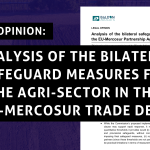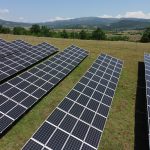After Montenegro as the first and only country from the Western Balkans Six that submitted a Nationally Determined Contribution 3.0 in February(1) –when the NDCs providing the 2035 commitment were due–, Serbia’s NDC came as a surprise within the extended informal deadline of September, though unfortunately without raising the ambition and presenting a conditional mitigation target.
The Montenegrin NDC did enhance the 2030 ambition and introduced a 2035 economy-wide GHG reduction target, however did not present an explicit 2030 to 2050 absolute pathway aligned with 1.5°C, and failed to address coal phase out and a just transition.
The new NDC of Serbia raises ambition to −40.1 per cent by 2035 vs 1990 (excluding LULUCF), but not as an absolute economy wide target. It does not update the 2030 target and establish a pathway aligned with the IPCC and Global Stocktake signals. Therefore, Serbia’s 2035 level is a step forward but is still lower than the 1.5°C-aligned benchmark. Serbia provides inventory references but lacks transparent breakdown of measures versus removals or offsets.
Furthermore, while the new NDC raises the ambition compared to the previous UNFCCC commitments, it is questionable how consistent it is with Serbia’s Strategy for Low-Carbon Development, or the Integrated National Energy and Climate Plan where the ambition set is a 40.3 per cent reduction in GHG emissions compared to 1990 by 2030 (including LULUCF). Since 2035 does not appear as a benchmark year in any other relevant document, the methodology applied to present the 2035 target remains unclear.
The document states though that the emission reduction target represents a temporary, conditional target, until the adoption of a new target for 2040, and within it a target for 2035, as part of the process of developing the new Integrated National Energy and Climate Plan, in accordance with the requirements of the relevant climate legislation of the European Union.
The new NDC explicitly notes heavy reliance on domestic lignite (≈70 per cent of electricity from thermal plants) and frames transition as a just-transition challenge, but does not set a coal and gas power phase-out date nor a production phase-out. The document mentions just energy transition, but the NDC lacks detailed just transition policies. It fails to embed concrete just transition measures such as jobs, reskilling, social protection in coal regions, and give participatory process details (which stakeholders and how decisions will be monitored).
In addition the NDC has sectoral coverage, but insufficient quantified pathways for renewables build-out, storage, grid modernisation and efficiency that we need to see.
On the other hand, there is a strong emphasis on adaptation, reflecting the country’s growing exposure to floods, droughts, and wildfires, and it notably provides a detailed Loss and Damage estimate of €10.45 billion since 2000. However, while Serbia identifies vulnerable sectors and acknowledges social and economic risks, the NDC lacks a cost adaptation plan, clear priority measures, equity-focused protection for vulnerable groups, and a monitoring framework to track adaptation progress. So Serbia performs well in assessing climate risks and highlighting the urgency of adaptation, but it still needs specific actions, timelines, and financing strategies to meet standards for robust, people-centered climate resilience.
In that sense, Serbia is strong on documenting damages and requests support, but does not present detailed, quantified finance needs or a finance mobilisation plan in the NDC itself. Bearing in mind that the 2035 target is presented as conditional, there is no clarity where conditionality should be met with a detailed finance ask.
The NDC was not consulted and prepared in the needed participatory manner, and relies on the consultations conducted for the preparation of the Integrated National and Energy Climate Plan. Although NECPs should provide the technical backbone for the NDCs, the NDC preparation is a separate process that must ensure meaningful, informed, and effective participation of all rights-holders – including local communities, women and youth.
Just this week, Serbia concluded the public consultation on the draft Law establishing a tax on greenhouse gas emissions and draft Law on the tax for import of carbon intensive products and national CSOs reacted on the non-compliance with public participation procedures as well as strategic and legal framework, which further undermines the consistency and credibility of the national climate planning.
Overall, the NDCs 3.0 presented by the Governments in the Western Balkans till now did not double as Paris compatible development and investment plans, and have not fulfilled CAN Europe’s key demands to raise climate ambition through credible and comprehensive NDCs, plan a fast, fair fossil fuel phase out, provide strategic and consistent long-term perspective as well as ensure coherence with national adaptation planning. In addition, the plans missed the opportunity to deliver climate justice through participation, accountability and a plan for adequate finance to respond to the needs.
While timely submission of NDCs was a priority, it is equally important that the NDCs that are under preparation in the remaining Western Balkan countries are addressing these gaps, ensuring participatory process and setting national consensus and a common vision in the long run.
2035 marks the midpoint between when most countries began implementing their NDCs in 2020 and when many, like the Western Balkans, have pledged to reach net zero emissions by 2050.
As such this round of NDCs is crucial for aligning short-term actions with long-term objective goals. The updated contributions, covering a ten year time-frame from 2025 to 2035, represent a decisive final opportunity to keep the 1.5°C goal within reach.
(1) Kosovo, although not a UN member, has voluntarily adopted its first Nationally Determined Contribution in the beginning of 2025.



